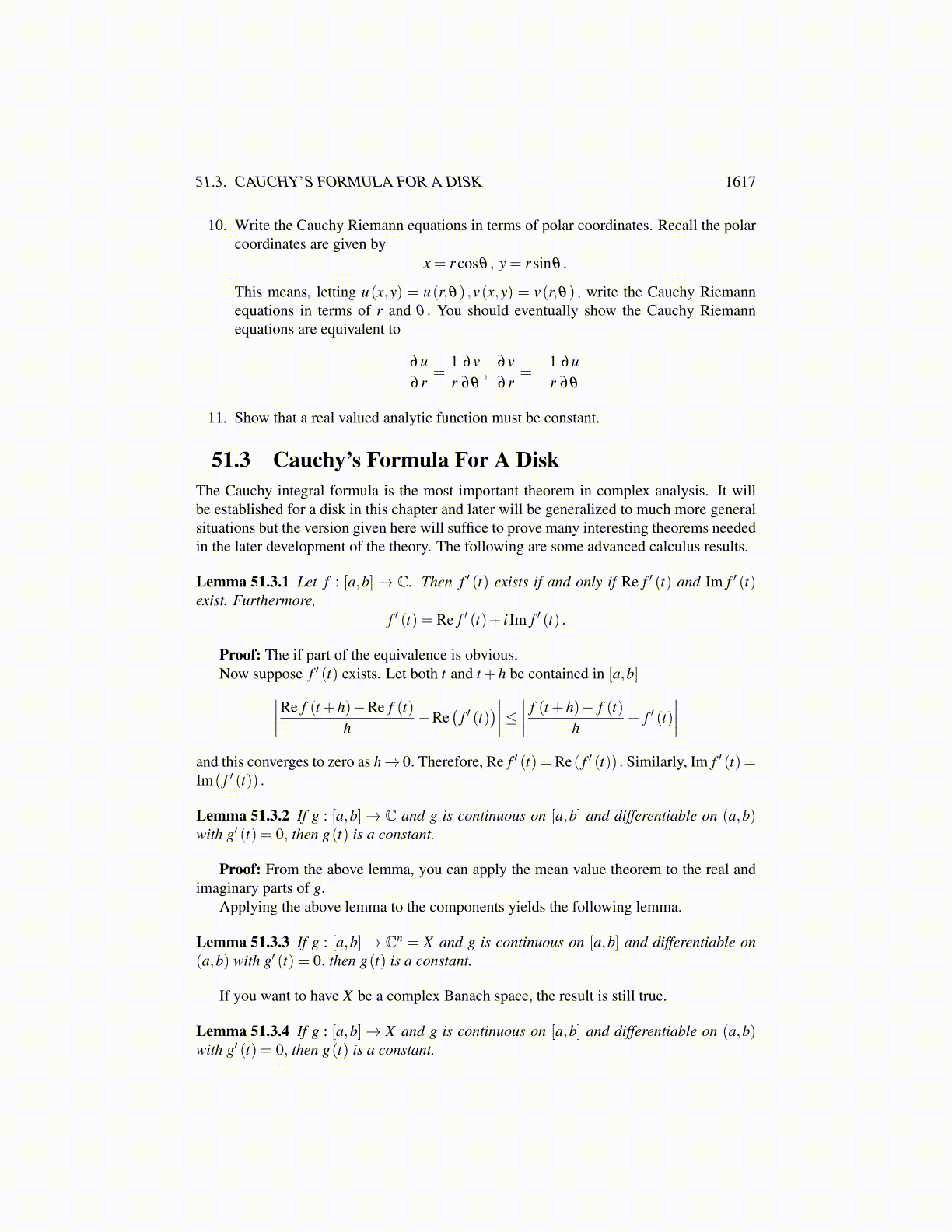
51.2. EXERCISES 1617
i(
∂v∂x
(x,y)h1 +∂v∂y
(x,y)h2
)+o(h) .
Dividing by h and using the Cauchy Riemann equations,
f (z+h)− f (z)h
=
∂u∂x (x,y)h1 + i ∂v
∂y (x,y)h2
h+
i ∂v∂x (x,y)h1 +
∂u∂y (x,y)h2
h+
o(h)h
=∂u∂x
(x,y)h1 + ih2
h+ i
∂v∂x
(x,y)h1 + ih2
h+
o(h)h
Taking the limit as h→ 0,
f ′ (z) =∂u∂x
(x,y)+ i∂v∂x
(x,y) .
It follows from this formula and the assumption that u,v are C1 (Ω) that f ′ is continuous.It is routine to verify that all the usual rules of derivatives hold for analytic functions.
In particular, the product rule, the chain rule, and quotient rule.
51.1.2 An Important ExampleAn important example of an analytic function is ez ≡ exp(z) ≡ ex (cosy+ isiny) wherez = x+ iy. You can verify that this function satisfies the Cauchy Riemann equations andthat all the partial derivatives are continuous. Also from the above discussion, (ez)′ =ex cos(y)+ iex siny = ez. Later I will show that ez is given by the usual power series. Animportant property of this function is that it can be used to parameterize the circle centeredat z0 having radius r.
Lemma 51.1.6 Let γ denote the closed curve which is a circle of radius r centered at z0.Then a parameterization this curve is γ (t) = z0 + reit where t ∈ [0,2π] .
Proof: |γ (t)− z0|2 =∣∣reitre−it
∣∣= r2. Also, you can see from the definition of the sineand cosine that the point described in this way moves counter clockwise over this circle.
51.2 Exercises1. Verify all the usual rules of differentiation including the product and chain rules.
2. Suppose f and f ′ : U → C are analytic and f (z) = u(x,y)+ iv(x,y) . Verify uxx +uyy = 0 and vxx + vyy = 0. This partial differential equation satisfied by the real andimaginary parts of an analytic function is called Laplace’s equation. We say thesefunctions satisfying Laplace’s equation are harmonic functions. If u is a harmonicfunction defined on B(0,r) show that v(x,y) ≡
∫ y0 ux (x, t)dt−
∫ x0 uy (t,0)dt is such
that u+ iv is analytic.